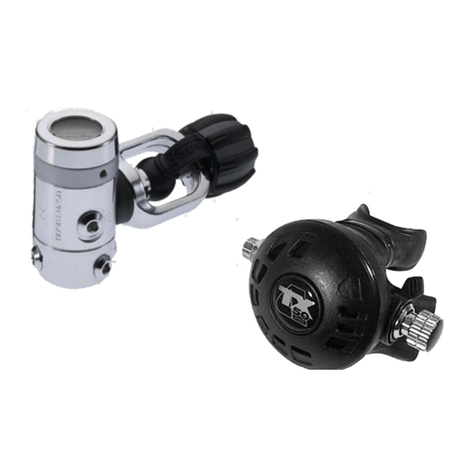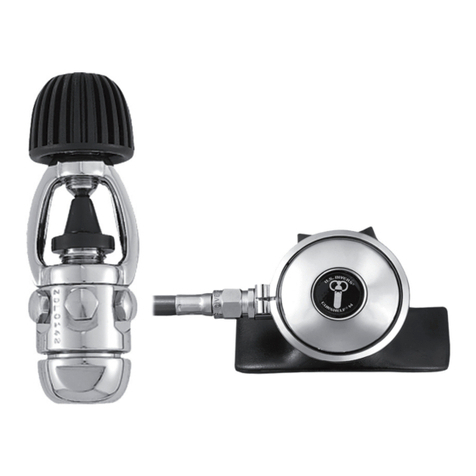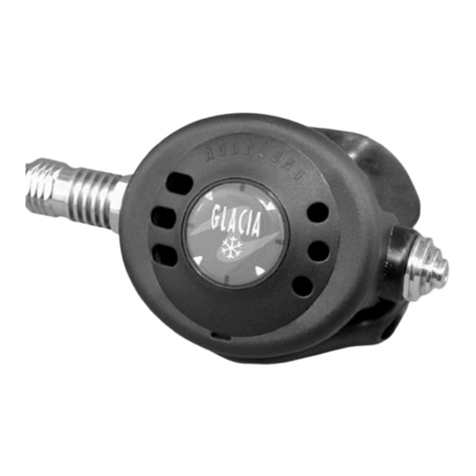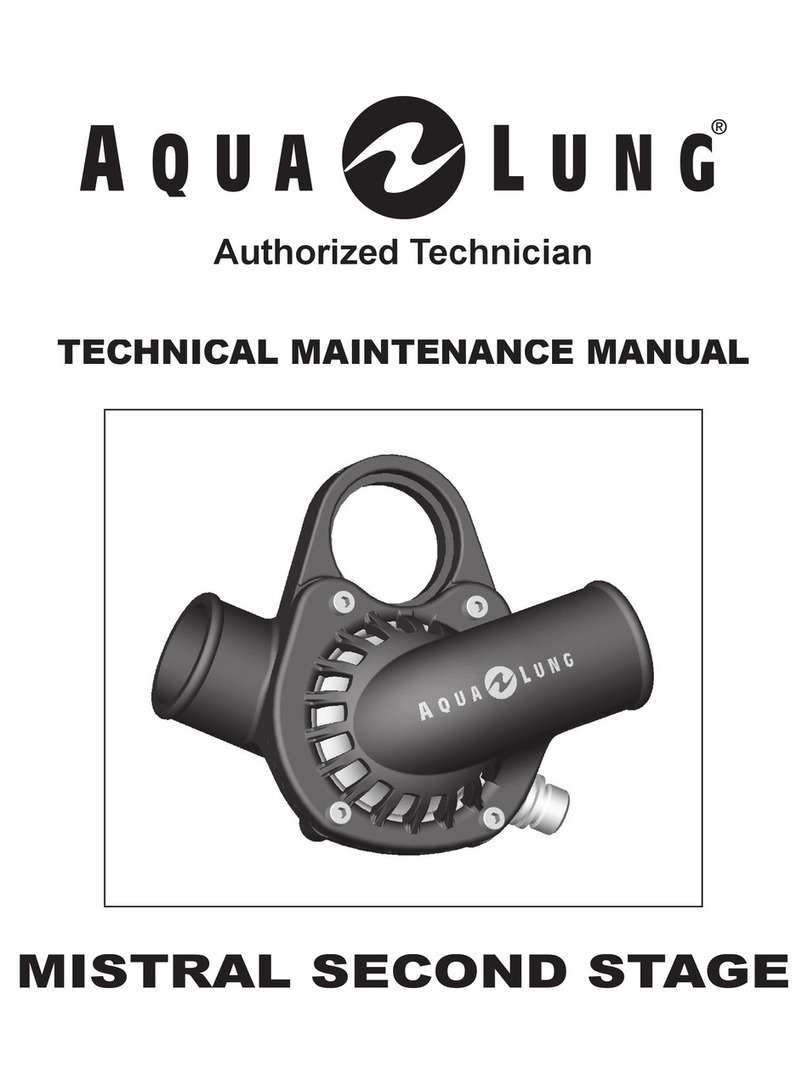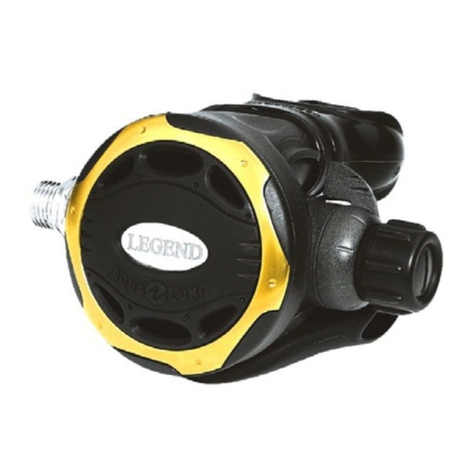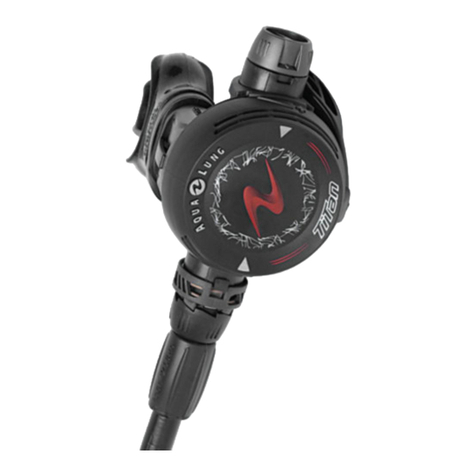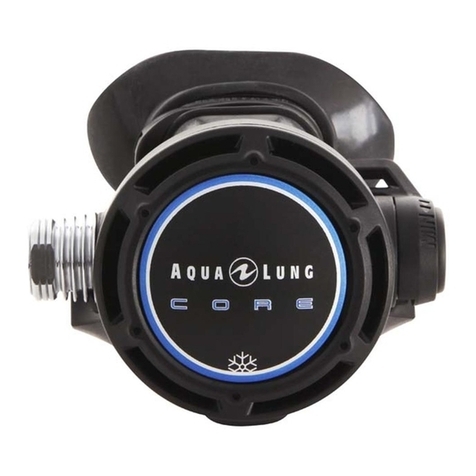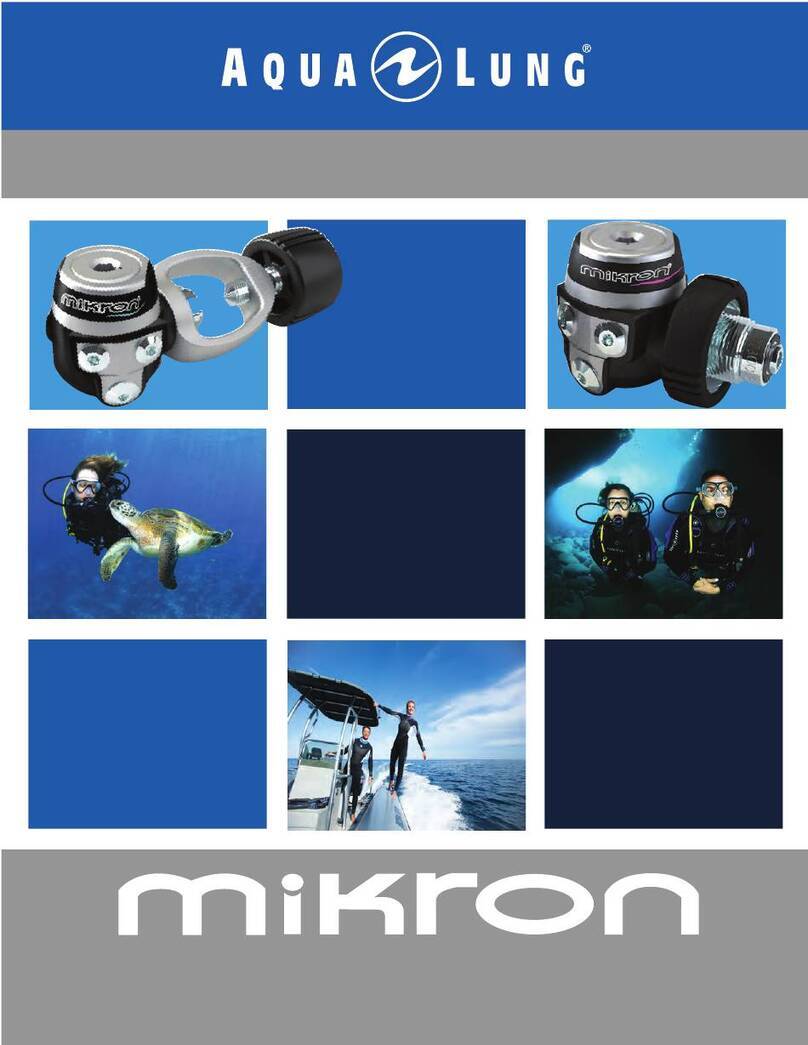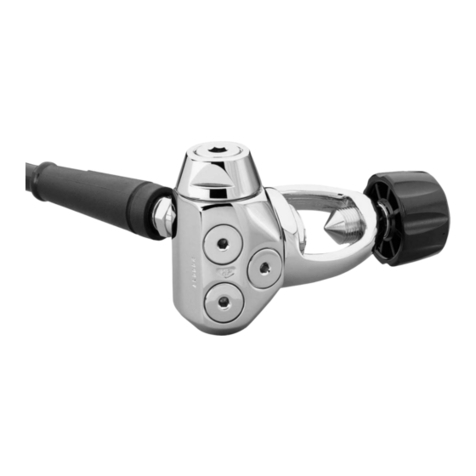
US
3
Contents:
General Precautions & Warnings............................................................................................4
Introduction...............................................................................................................................5
Enriched Air Nitrox Use (EAN).................................................................................................7
Enriched Air Nitrox Use – Outside EEC (European Economic Community) Countries...7
Enriched Air Nitrox Use – Inside EEC (European Economic Community
countries EN 1443-3 and EN13949.................................................................................8
Overview of Features..............................................................................................................10
Second Stage Hose Configuration.................................................................................10
Diver Changeable Exhaust System (DCE)....................................................................11
External Second Stage Adjustments.............................................................................13
Integrated Venturi Switch...............................................................................................13
Inhalation Resistance Control Knob..............................................................................14
Egress Second Stage....................................................................................................15
Status.......................................................................................................................................16
Safety First.....................................................................................................................16
Status Operational LCD Display Sequence...................................................................16
Servicing........................................................................................................................17
Understanding the Status..............................................................................................17
Status Product Range....................................................................................................17
Status Operating Procedure..........................................................................................17
Status Condition Display Guide.....................................................................................18
Cold Water Diving..........................................................................................................19
If the Status Fails to Display..........................................................................................19
Warranty Restriction..............................................................................................................20
First Stage Environmental Protection............................................................................21
Second Stage Cold Water Protection............................................................................21
Auxilliary Emergency Breathing Systems............................................................................22
Preparation and Setup............................................................................................................25
Hose Attachment............................................................................................................25
Hose Fitting Operation For Lightweight 2nd Stages......................................................25
Attaching the First Stage to the Cylinder Valve (Yoke)..................................................27
Attaching the First Stage to the Cylinder Valve (DIN)...................................................28
DIN to Yoke Converter...................................................................................................30
Diving with Your Regulator....................................................................................................31
Pre-Dive Inspection Checklist.........................................................................................31
During the Dive...............................................................................................................32
Diving In Cold Water.......................................................................................................33
After the Dive..........................................................................................................................35
Removal of the Regulator from the Cylinder Valve (DIN)..............................................35
Care & Maintenance.......................................................................................................36
Dealer Service & Repair.................................................................................................38
Cleaning the Swivel Joint......................................................................................................39
Removal of the Swivel Joint...........................................................................................40
Warranty Information.............................................................................................................41
Limited Lifetime Warranty...............................................................................................41
Restrictions.....................................................................................................................42
Returning Your Regulator For Service...........................................................................42
Markings and Abbreviations...........................................................................................43
Notes.........................................................................................................................44-46
Regulator Service Record.........................................................................................................47
Regulator Owner’s Manual
............................................................................................
